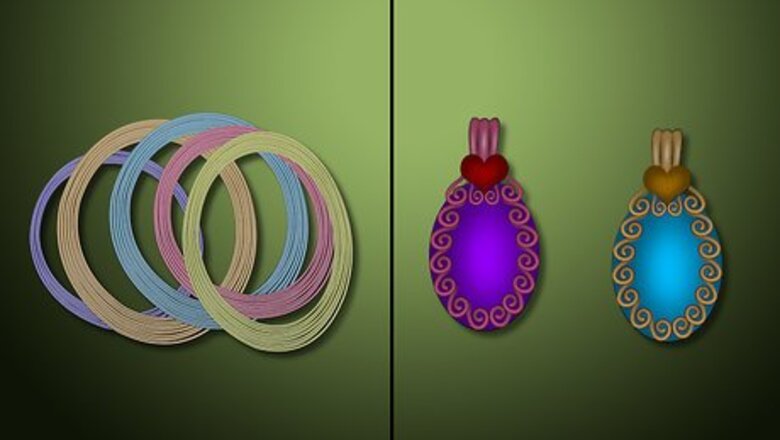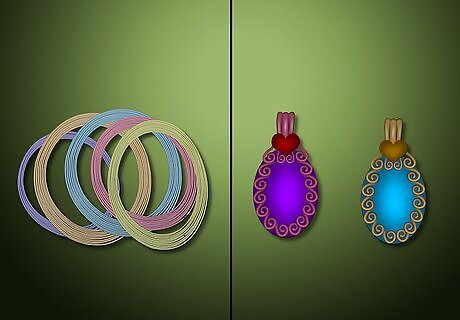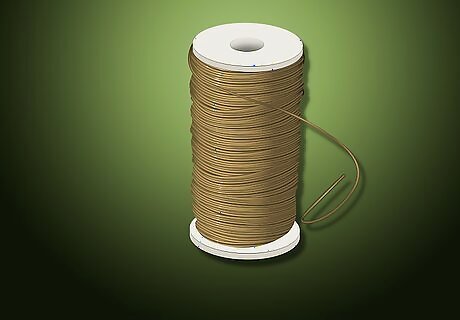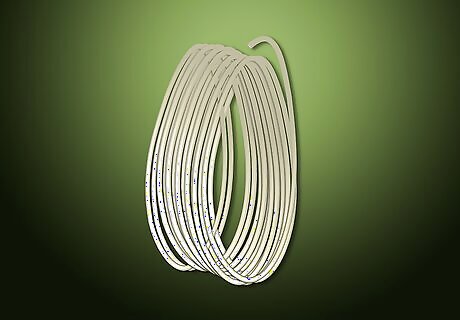
views

Choose your project. Different jewelry projects require different wire, so choose wire anew each time you begin a new type of wire jewelry creation.

Choose what material you want to use. Wire comes in aluminum, iron, copper wire, craft, colored, French wire, gold-filled, memory wire, sterling silver wire, silver plated and tiger tail. The price largely depends upon the material used to make the wire. Tiger tail wire is a very common wire in jewelry making. It is a braided stainless steel wire that is coated in nylon. It is very strong and comes in a number of colors. It cannot be used for wire wrapping, but it can be used to give the look of an "invisible" setting, where the beads look like they are floating.Choose Wire for Jewelry Step 2Bullet1 Version 2.jpg Other standard, inexpensive choices for skilled jewelry making are copper, aluminum and niobium. Copper wire comes in gold and silver colors and it is coated with enamel. Color coated aluminum wire comes in many colors and gauges and often has the color inside the wire, so you don't have to be as careful when working with tools. Niobium is light, comes in many colors and is not delicate.Choose Wire for Jewelry Step 2Bullet2 Version 2.jpg French wire is a coiled wire that is great for accenting jewelry. It comes in copper, gold-plated, silver-plated, sterling silver and vermeil. The smaller the coil, the more precious the metal, and the more expensive.Choose Wire for Jewelry Step 2Bullet3 Version 2.jpg Gold filled wire has 100 times more gold in it than gold-plated wire. It comes in dead soft, half-hard and full-hard, which is a scale from very delicate to extremely tough. This is an expensive wire, so it should probably be saved for special projects.Choose Wire for Jewelry Step 2Bullet4 Version 2.jpg Memory wire is made from carbon steel or stainless steel. It is great for bangles or other loops because it returns to the loop it was made into in the factory. It cannot be used for any projects that require wrapping.Choose Wire for Jewelry Step 2Bullet5 Version 2.jpg Sterling silver also comes in the strength scale of dead soft, half-hard and full-hard,Choose Wire for Jewelry Step 2Bullet6 Version 2.jpg Gold and silver-plated wires are great for creating a fancy look, but they can be easily ruined by tools.Choose Wire for Jewelry Step 2Bullet7 Version 2.jpg

Choose the size of wire you want to use for your project. Use 30-gauge or 28-gauge (0.25 to 0.32 mm) wire for delicate jewelry making. It is great for wire weaving, rings, bead work and making small chains. Use fine jewelry making tools for this gauge.Choose Wire for Jewelry Step 3Bullet1 Version 2.jpg Use 26-gauge (0.40 mm) to wrap beads and make smaller chain loops. This is the beginning of the finer gauges of wire. Also use fine tools with this gauge.Choose Wire for Jewelry Step 3Bullet2 Version 2.jpg Use 24-gauge (0.51 mm) wire for most beading projects. The gauge fits through most beads but isn't too bulky. It has a tendency to get kinks so you may need to buy a wire-straightening tool.Choose Wire for Jewelry Step 3Bullet3 Version 2.jpg Use 22-gauge (0.64 mm) wire for stone settings, earrings and pendants. It is a medium-gauge wire, which is commonly found in a number of materials and colors.Choose Wire for Jewelry Step 3Bullet4 Version 2.jpg Use 20 to 18-gauge (0.81 to 1 mm) wire for average clasps, jump rings and pins. This medium gauge wire can also be used for thicker chains or for stringing glass beads.Choose Wire for Jewelry Step 3Bullet5 Version 2.jpg Use 16 to 14-gauge (1.3 to 1.6 mm) wire, best used for large, heavy jewelry construction. If you use heavy beads or you are experimenting, this thick wire will make a statement. You can also use it for napkin rings or lampshade forms.Choose Wire for Jewelry Step 3Bullet6 Version 2.jpg




















Comments
0 comment